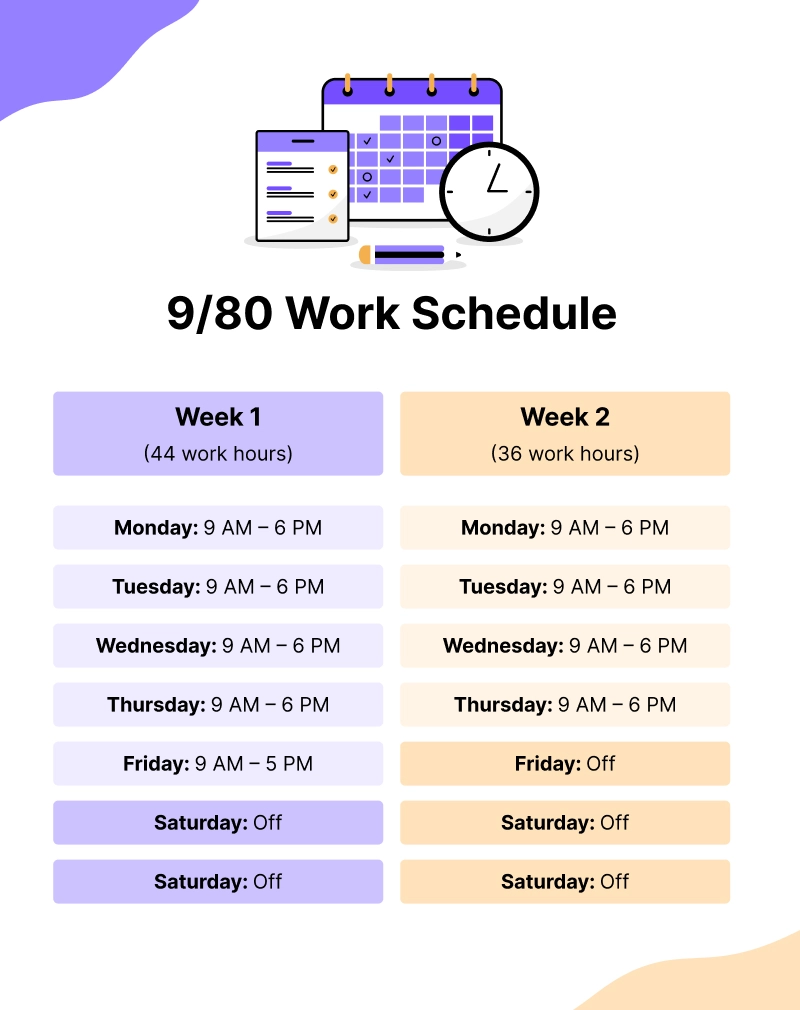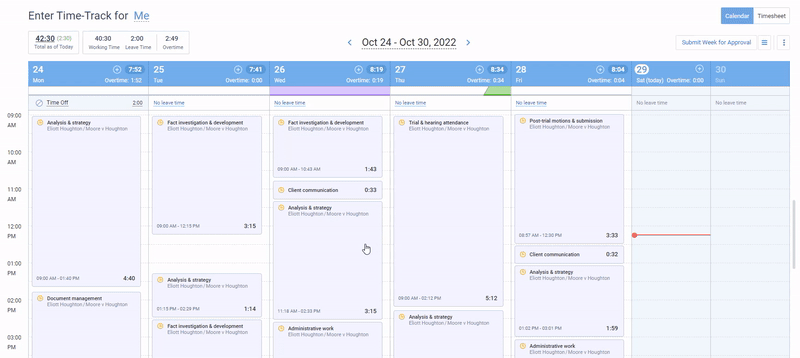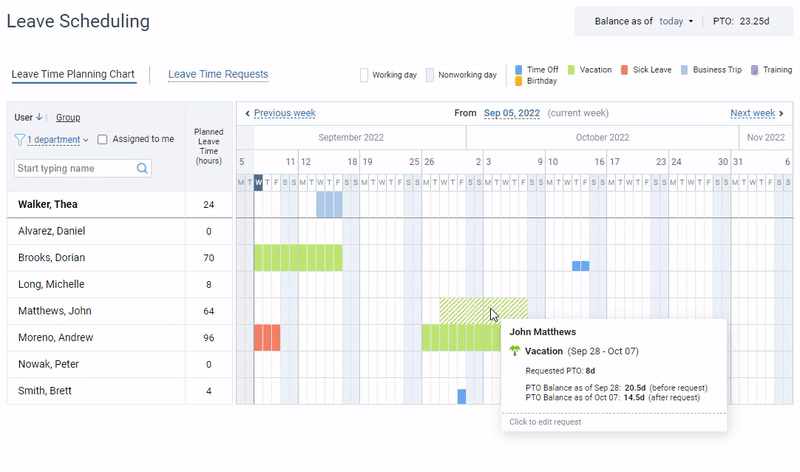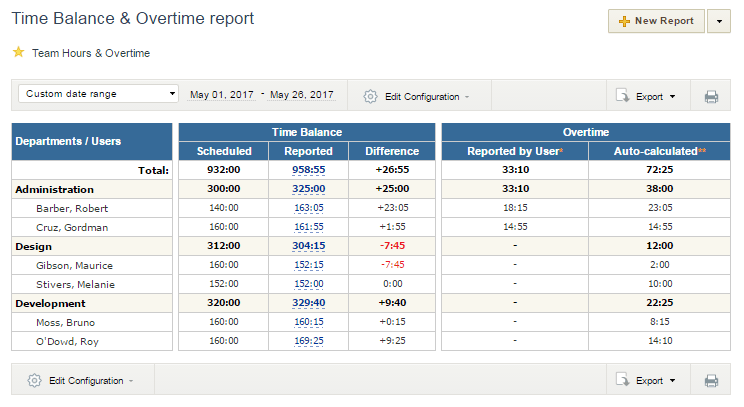
Ever wish you could have a three-day weekend, every other week? The 9/80 work schedule promises just that.
It’s a modern twist on the traditional work week, designed to boost productivity while giving employees more flexibility and personal time. However, like any good life hack, it comes with its own set of challenges and nuances.
So, is it an excellent efficiency booster or just another way to stretch ourselves too thin?
Let’s dive into the 9/80 schedule and see if it’s your ticket to a better work-life balance or a stress trap waiting to spring.
9/80 Work Schedule Defined
A 9/80 work schedule is a flexible workplace arrangement where employees work 80 hours over 9 days, rather than the usual 10 days.
This setup generally means working 9-hour days from Monday through Thursday and then an 8-hour day on one Friday, followed by getting the next Friday off. Essentially, it compresses 10 days of work into 9, giving you a long weekend every second week.

9/80 Work Schedule: Possible Variations
- Standard 9/80: You work 9 hours a day from Monday to Thursday and 8 hours on the first Friday. Then, enjoy your well-earned 3-day weekend every other week, waving goodbye to those regular Fridays.
- Flexible 9/80: This one’s for those who cherish a bit more freedom. Besides your core 9-hour days, you have the flexibility to tweak your start and end times. Maybe you’re an early bird or prefer to miss the rush hour – either way, you’re covered.
- Staggered 9/80: Ideal for teams that need coverage across various times. Some team members might opt for an earlier start, while others can take a later shift, ensuring the office hums along smoothly throughout the day.
Managing Payroll Under the 9/80 Work Schedule
1. Calculate overtime pay precisely
In a nutshell, to calculate payroll under the 9/80 schedule, you need to split two workweeks at the midpoint:
- The first week comprises four 9-hour days and one 8-hour day, totaling exactly 44 hours.
- The second week is made up of four 9-hour days, tallying up to 36 hours.
In terms of payroll, this means you have to consider overtime calculations and handle them accurately to stay compliant. For the first week, anything above 40 hours is considered overtime, so you’ll have 4 hours of overtime to account for. The second week, however, is straightforward with no overtime.
Pro tip:
When it comes to overtime tracking and payroll accrual, actiTIME is your go-to solution (no matter which work schedule you adhere to). It lets you track employee hours and staff-related costs using a variety of methods and record every moment of overtime 100% automatically.

With a few clicks, you can create detailed overtime reports to see exactly where those extra hours are piling up and ensure that everyone’s getting paid what they deserve without the hassle of manual calculations.
On top of that, actiTIME reports and other handy work management features make it a breeze to monitor project progress, keep track of resources, and catch any time wasters early on.

All in all, with actiTIME, you’ll spend less time crunching numbers and more time focusing on what really matters. Sign up for a free 30-day trial to see it in action yourself. 👈
2. Track employee leave
When you take a day off under the 9/80 work schedule, it’s important to note whether it’s a 9-hour or an 8-hour workday. To handle this issue adequately, follow the below steps:
- Clearly document how your leave policy interacts with your 9/80 work schedule. For example, if someone takes a full day off on an 8-hour day versus a 9-hour day, how does that affect their leave balance? One effective method is to prorate leave based on the number of hours typically worked on a given day. So, taking leave on a 9-hour workday would naturally deduct more hours from their leave balance than on an 8-hour workday.
- Use an intuitive leave management system that can handle nuances like partial days and automatically adjust hours to keep things neat and tidy. Keep everyone in the loop with a transparent visual leave calendar to minimize disruptions and ensure smooth operations.
Pro tip:
Managing leave under the 9/80 work schedule can be a real pain, yet thankfully, actiPLANS takes that stress off your shoulders:
- First off, it lets you set custom leave accrual rules and tailor them to your unique work schedule. Then, it calculates leave balances automatically, so you may forget about all the problems of manual data processing.
- Need to tweak an employee’s leave balance? The built-in manual adjustment feature makes it super straightforward to do.
- Plus, the intuitive visual timeline makes it easy for employees to request leave time by the hour and see exactly when their teammates are available. This way, actiPLANS simplifies the entire leave management process a great deal.

Find out more about actiPLANS during a free 30-day trial. 👈
Legal Nuances
Now, let’s dive into the legal twists and turns of managing the 9/80 work schedule and take the Fair Labor Standards Act (FLSA) in the United States as the first example.
This law mandates that any work beyond 40 hours in a single workweek is considered overtime and must be paid at time-and-a-half (unless they are overtime exempt).
- So, if an employee is working those extra hours on the first Friday of their 9/80 schedule, it can spill over into overtime territory. However, companies often re-jig their workweek definition to run from Friday noon to the next Friday noon to dodge this, making those extra hours fit snugly within two separate weeks.
- California throws another wrench into the works with its daily overtime rules – anything over 8 hours in a day counts as overtime. For employers here, making 9/80 work means getting employees to sign off on an Alternative Workweek Schedule (AWS), which needs approval from a two-thirds majority of the affected workers and must be filed with the Department of Industrial Relations.
For more information on overtime management, feel free to check out our comprehensive guide. 👈
Key Benefits of the 9/80 Work Schedule
For employers
The 9/80 work schedule can really be a win-win for both employers and employees, helping you create to a more dynamic, productive, and happy workplace. Here’s how:
- Increased productivity: By giving employees an extra day off every two weeks, you’ll often see a boost in productivity. Employees are more focused and engaged during their workdays because they know they have that coveted day off coming up.
- Improved employee morale: Who doesn’t love an extra day off? Employees are generally happier and more satisfied with their jobs when they have a better work-life balance. And happy employees are more likely to stick around, reducing turnover.
- Attraction of top talent: Offering a 9/80 schedule can make your company more attractive to top talent. In a competitive job market, unique perks like this can be the difference between landing a great new hire and losing them to a competitor.
- Reduced absenteeism: With that extra day off, employees can schedule personal appointments, reducing the need to take time off during regular workdays. This means you’ll have fewer unexpected absences to deal with.
- Cost savings: By operating fewer days, you can save on overhead costs like utilities. Plus, with higher employee retention and less turnover, you cut down on recruitment and training expenses.
For employees
Adopting a 9/80 work schedule can significantly enhance the quality of life for employees. Here are some key benefits:
- Longer weekends: With a 9/80 schedule, every other Friday is a day off – it’s like a mini-vacation twice a month! You get a full day to relax, run errands, or embark on a long weekend getaway – an extra little break from the hustle and bustle of the regular work week.
- Reduced commute stress: Commuting can be a real drain on your energy and time. By working longer hours over fewer days, you’re cutting down on the number of times you have to face traffic. Fewer commutes (and the altered workday duration) mean less time stuck in cars or on crowded trains. This, in turn, reduces overall stress and can even improve your mood throughout the day.
- Higher job satisfaction: When you feel like you have more control over your life and time, job satisfaction tends to follow. And since the 9/80 work schedule may provide a better work-life balance, it helps employees feel happier and appreciate their jobs even more.
Disadvantages of the 9/80 Work Schedule
Regardless of the above advantages, the 9/80 schedule is definitely not for everyone. Below are a few cons it may have:
For employers
- Overtime overload: Some employers might end up paying more in overtime. If employees frequently work beyond their scheduled hours, those extra-long workdays can add up financially, especially in situations when your team’s workload doesn’t depend on the amount of time worked per day.
- Scheduling chaos: Managing the 9/80 work schedule means reworking the logistics of your team meetings, deadlines, and collaboration. Team sync-ups can become tricky if some people are available on Fridays while others are not – this can lead to communication breakdowns and slower decision-making processes.
- Admin overheads: There’s also the aspect of additional administrative work. HR and payroll systems must be updated to handle unconventional work hours. Figuring out the benefits and accruals like vacation time or sick leave can become more complex as well.
For employees
- Longer workdays: Sure, you get that extra day off every two weeks, but the trade-off is longer days. That extra hour of work per day can feel like a marathon, especially when you’re already running on empty by the end of the day.
- Work-life disbalance: While having an extra day off sounds fantastic, the longer hours can mess with your usual routine. It can be trickier to balance family time, social activities, and personal errands on a day-to-day basis when you’re getting home later and more exhausted.
- Fatigue: Let’s face it – longer hours can lead to burnout. The extended workday might mean your productivity levels take a nosedive by mid-afternoon. It’s harder to stay focused and energized for 9 hours straight, and the risk of making mistakes could increase.
How to Introduce the 9/80 Work Schedule Smoothly
Thinking of switching to a 9/80 work schedule in your company? Here are some expert tips to ensure a smooth transition:
1. Communicate clearly and early
Transparency is key. Start by setting up meetings to explain the 9/80 work schedule – what it is, how it works, and what the benefits are. An FAQ session can also help address any concerns employees might have.
The earlier you communicate, the more time everyone has to adjust mentally.
2. Run a pilot program
Consider running a pilot program before fully committing. Choose a small group of departments to test the waters for a few months. This allows you to gather feedback, identify any issues, and refine the process before a company-wide rollout.
3. Make it as flexible as possible
While the 9/80 work schedule usually adds structure, life unfolds in unpredictable ways. Thus, allowing employees a degree of flexibility can make them more receptive to the change. Whether it’s adjusting start times or swapping Fridays off occasionally, flexibility keeps everyone happy and productive.
4. Develop clear documentation
Create a comprehensive guide that outlines the new schedule, expectations, and policies. Such a document will serve as a reference point for any questions and will help to keep everyone on the same page.
5. Provide support to team managers
Managers should be fully on board and prepared to support their teams during the transition. This includes being available to answer questions, provide guidance, and tackle any minor issues that might arise.
6. Run check-in meetings
Hold regular check-ins during the transition period to gather feedback and make necessary adjustments. These meetings can be a great platform for employees to voice any concerns or suggestions.
7. Celebrate the benefits
Focus on the positives!
Highlight how the new schedule provides a better work-life balance, reduces commuting time, and boosts overall productivity. Celebrating the perks can ease apprehensions and get everyone excited about the change.
Conclusion
As it turns out, the 9/80 work schedule presents both opportunities and challenges. However, whether it acts as a productivity hack or puts your employees under greater stress depends a lot on how well you manage and adapt it to the needs of your team.
While alternative schedule setups can be a double-edged sword, tools like actiTIME can make a world of difference.

With its robust overtime and leave management features, actiTIME ensures smoother workflows and happier teams, no matter which work schedule you’re rocking.
Ready to take your team’s productivity to the next level? Give actiTIME a try and make the most out of every second of work!













































